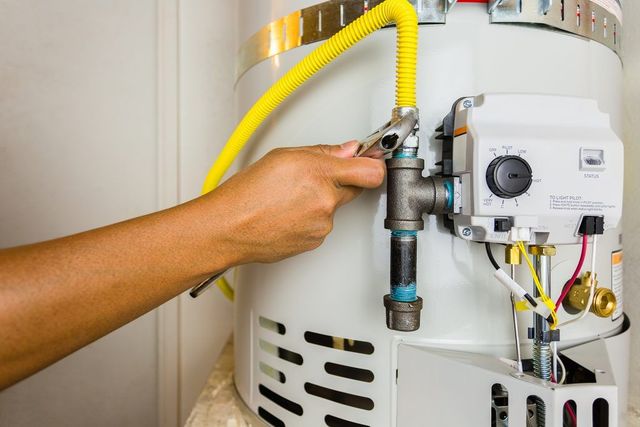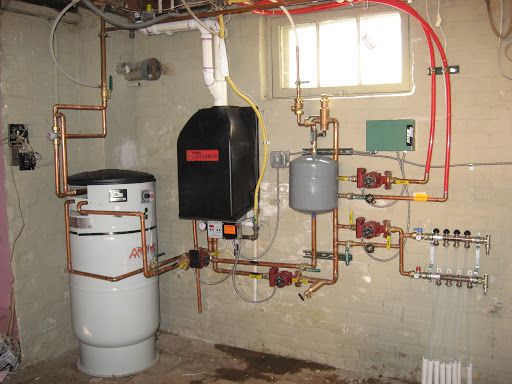Simple Steps to Caring for Your Home's Hot Water System
Simple Steps to Caring for Your Home's Hot Water System
Blog Article
This great article down below in relation to How to Maintain Your Water Heater & Prolong its Life is highly compelling. Have a go and make your own final thoughts.

Warm water is necessary for daily convenience, whether it's for a rejuvenating shower or washing recipes. To ensure your warm water system runs effectively and lasts much longer, routine maintenance is vital. This short article offers sensible ideas and insights on how to maintain your home's warm water system to prevent interruptions and pricey repair services.
Introduction
Keeping your home's hot water system could seem overwhelming, yet with a few straightforward steps, you can guarantee it operates efficiently for years to come. This guide covers whatever from recognizing your warm water system to do it yourself upkeep pointers and recognizing when to call expert aid.
Value of Maintaining Your Warm Water System
Normal maintenance not only expands the lifespan of your warm water system but likewise ensures it runs efficiently. Ignoring maintenance can cause lowered effectiveness, greater power bills, and even early failure of the system.
Indications Your Warm Water System Needs Upkeep
Understanding when your warm water system requires attention can stop significant issues. Watch out for indications such as irregular water temperature level, unusual sounds from the heating system, or rusty water.
Comprehending Your Warm Water System
Before diving right into upkeep jobs, it's useful to comprehend the standard components of your hot water system. Normally, this consists of the hot water heater itself, pipes, anode rods, and temperature controls.
Regular Monthly Upkeep Tasks
Routine regular monthly checks can aid capture minor concerns prior to they intensify.
Purging the Hot Water Heater
Purging your hot water heater removes sediment buildup, boosting performance and prolonging its life.
Checking and Replacing Anode Rods
Anode rods prevent corrosion inside the storage tank. Evaluating and changing them when broken is essential.
Examining and Adjusting Temperature Settings
Adjusting the temperature level setups makes sure optimum efficiency and security.
Do It Yourself Tips for Upkeep
You can carry out numerous upkeep tasks yourself to keep your warm water system in leading problem.
Checking for Leakages
Consistently evaluate pipelines and connections for leaks, as these can lead to water damages and greater bills.
Examining Stress Relief Valves
Examining the stress relief valve ensures it works appropriately and prevents extreme stress build-up.
Protecting Pipes
Insulating warm water pipelines decreases heat loss and can conserve energy.
When to Call a Professional
While do it yourself upkeep is useful, some issues call for expert experience.
Facility Issues Requiring Expert Help
Instances consist of significant leaks, electric problems, or if your hot water heater is continually underperforming.
Regular Expert Maintenance Conveniences
Expert maintenance can consist of extensive evaluations, tune-ups, and making certain compliance with safety and security requirements.
Conclusion
Routine maintenance of your home's warm water system is essential for performance, durability, and cost financial savings. By following these ideas and knowing when to look for specialist aid, you can make sure a reliable supply of warm water without unexpected interruptions.
Water Heater Maintenance: The Basics
Maintaining your water heater will ensure it operates efficiently and has a longer lifespan. Neglecting regular maintenance can lead to costly repairs and an even bigger chunk of your savings if you have to replace it sooner than necessary. But there’s good news: Most water heater maintenance tasks are relatively simple and easy for homeowners with basic DIY skills.
Flush the Water Heater
Over time, sediment and minerals can build up in the tank, reducing its efficiency and potentially causing damage. To flush the tank, turn off the power or gas supply, attach a hose to the drain valve near the bottom and open the valve to drain the water until it runs clear. Ideally, flush the tank annually.
Replace the Anode Rod
The anode rod is a sacrificial metal rod that helps prevent corrosion inside the tank. Inspect and replace it every three to five years or per the manufacturer's recommendation. To replace the anode rod, turn off the power or gas supply, drain a few gallons of water from the tank, unscrew the old rod and replace it with a new one. If the anode rod is significantly corroded or covered in calcium buildup, it's a sign the water heater may need to be replaced soon.
Tune-Up
A yearly tune-up can help identify potential issues and ensure your water heater operates at peak efficiency. This typically involves checking the thermostat, burner assembly (for gas heaters) and any other components specified by the manufacturer. During a tune-up, the technician may also clean the burner and adjust the pilot light (for gas heaters) or examine the heating elements (for electric heaters).
How to Maintain Your Water Heater
Insulate the tank. Insulating the tank can improve energy efficiency and reduce heat loss, saving you money on energy bills. You can purchase precut insulation blankets designed specifically for water heaters or use standard fiberglass insulation wrapped securely around the tank. Check the temperature. The recommended water temperature for most households is around 120 degrees Fahrenheit (49 degrees Celsius). Higher temperatures can increase energy costs and potentially cause scalding. Use a kitchen thermometer to check the temperature at the faucet nearest the water heater. Monitor water pressure. Excessive water pressure can strain the water heater and cause leaks or even tank failure. Install a pressure-reducing valve if necessary. The ideal water pressure range is between 60 and 70 PSI (pounds per square inch). Test the temperature and pressure (T&P) relief valve. The T&P relief valve is a safety feature that releases pressure if the tank gets too hot or the pressure builds up too high. Test it annually by lifting the lever and allowing a small amount of water to release. Replace the valve if it doesn't release water or reseal properly. Check for leaks. Regularly inspect the tank, pipes and fittings for leaks or corrosion. Deal with issues promptly to prevent further damage. Even a small leak can lead to significant water damage over time. Consider a tankless water heater. If your traditional tank-style water heater is nearing the end of its lifespan ( typically 10 years), consider replacing it with a tankless water heater. These units heat water on demand, reducing standby energy losses and potentially saving you money on your energy bills. Schedule professional maintenance. While homeowners can perform many water heater maintenance tasks, it's still a good idea to schedule professional maintenance every few years. A plumber or HVAC technician can thoroughly inspect the unit, identify potential issues and ensure it operates safely and efficiently. https://www.homeserve.com/en-us/blog/home-improvement/hot-water-heater-maintanence/

We are very involved in How to Maintain Your Water Heater & Prolong its Life and I am praying you appreciated my article. Do you know about anybody else who is serious about the topic? Take a moment to promote it. We treasure reading our article about How to Maintain Your Water Heater & Prolong its Life.
Click Here Report this page